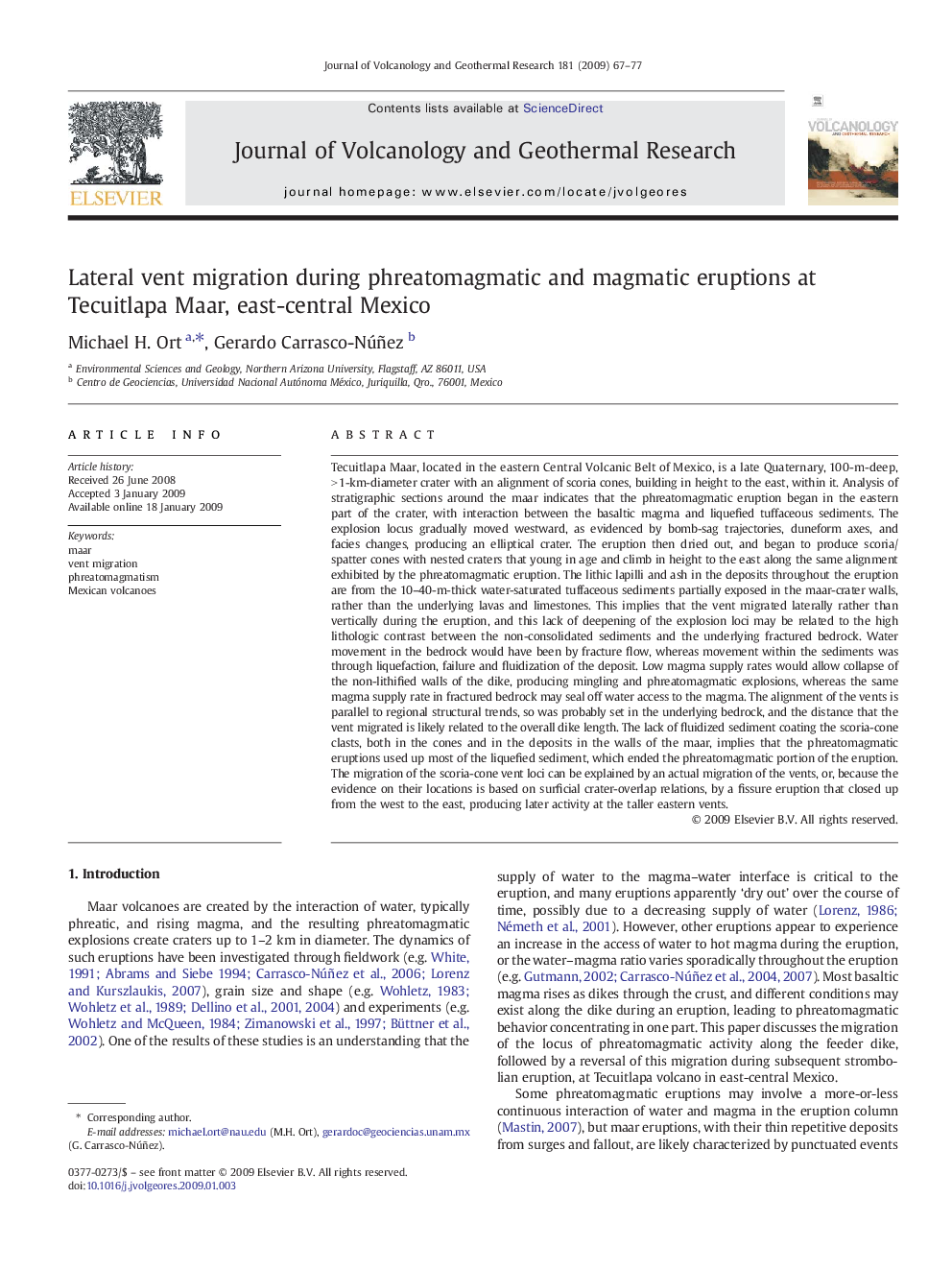| کد مقاله | کد نشریه | سال انتشار | مقاله انگلیسی | نسخه تمام متن |
|---|---|---|---|---|
| 4715240 | 1638441 | 2009 | 11 صفحه PDF | دانلود رایگان |
عنوان انگلیسی مقاله ISI
Lateral vent migration during phreatomagmatic and magmatic eruptions at Tecuitlapa Maar, east-central Mexico
دانلود مقاله + سفارش ترجمه
دانلود مقاله ISI انگلیسی
رایگان برای ایرانیان
موضوعات مرتبط
مهندسی و علوم پایه
علوم زمین و سیارات
ژئوشیمی و پترولوژی
پیش نمایش صفحه اول مقاله

چکیده انگلیسی
Tecuitlapa Maar, located in the eastern Central Volcanic Belt of Mexico, is a late Quaternary, 100-m-deep, >Â 1-km-diameter crater with an alignment of scoria cones, building in height to the east, within it. Analysis of stratigraphic sections around the maar indicates that the phreatomagmatic eruption began in the eastern part of the crater, with interaction between the basaltic magma and liquefied tuffaceous sediments. The explosion locus gradually moved westward, as evidenced by bomb-sag trajectories, duneform axes, and facies changes, producing an elliptical crater. The eruption then dried out, and began to produce scoria/spatter cones with nested craters that young in age and climb in height to the east along the same alignment exhibited by the phreatomagmatic eruption. The lithic lapilli and ash in the deposits throughout the eruption are from the 10-40-m-thick water-saturated tuffaceous sediments partially exposed in the maar-crater walls, rather than the underlying lavas and limestones. This implies that the vent migrated laterally rather than vertically during the eruption, and this lack of deepening of the explosion loci may be related to the high lithologic contrast between the non-consolidated sediments and the underlying fractured bedrock. Water movement in the bedrock would have been by fracture flow, whereas movement within the sediments was through liquefaction, failure and fluidization of the deposit. Low magma supply rates would allow collapse of the non-lithified walls of the dike, producing mingling and phreatomagmatic explosions, whereas the same magma supply rate in fractured bedrock may seal off water access to the magma. The alignment of the vents is parallel to regional structural trends, so was probably set in the underlying bedrock, and the distance that the vent migrated is likely related to the overall dike length. The lack of fluidized sediment coating the scoria-cone clasts, both in the cones and in the deposits in the walls of the maar, implies that the phreatomagmatic eruptions used up most of the liquefied sediment, which ended the phreatomagmatic portion of the eruption. The migration of the scoria-cone vent loci can be explained by an actual migration of the vents, or, because the evidence on their locations is based on surficial crater-overlap relations, by a fissure eruption that closed up from the west to the east, producing later activity at the taller eastern vents.
ناشر
Database: Elsevier - ScienceDirect (ساینس دایرکت)
Journal: Journal of Volcanology and Geothermal Research - Volume 181, Issues 1â2, 20 March 2009, Pages 67-77
Journal: Journal of Volcanology and Geothermal Research - Volume 181, Issues 1â2, 20 March 2009, Pages 67-77
نویسندگان
Michael H. Ort, Gerardo Carrasco-Núñez,